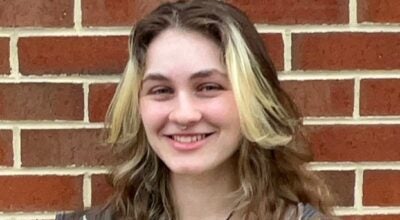The more things change
Published 10:33 am Thursday, April 6, 2017
A Longwood alumna who graduated a little more than a decade ago was recently back in town for a short visit. She commented on how much things had stayed the same. “Farmville is just like it was,” she concluded. After a brief reflective pause, she acknowledged that the restaurant that had once served as her favorite student hangout had closed, “That was a surprise,” she concluded.
I was stunned. I haven’t yet been here a decade, but it feels like a lot has changed. My favorite coffee shop closed, although another stepped up to take its place. Other businesses have come and gone. Buildings have been deconstructed. New buildings are going up. The caboose has relocated to Farmville’s downtown plaza area. Back Hampden-Sydney Road has been modified, U.S. Route 15 heading south has been repaved and the Longwood University campus boasts a shiny new patina, still lingering from last fall’s U.S. Vice Presidential Debate.
But, although I was surprised to hear someone’s assessment that not much had changed, I could relate to the experience. When I was growing up, I spent a few elementary school years on Virginia’s Eastern Shore in a small town called Parksley.
After my family moved away from the Eastern Shore, I didn’t make it back for 25 years. Then, one summer vacation my husband and I, along with our three young children, decided to visit. As tourists, we spent most of our time a bit farther north, in and around Chincoteague and on Assateague Island. Nearby, in the visitor’s center at Wallops Island, we watched a live feed from the space shuttle, and I told my children about my early school days that spanned parts of NASA’s Mercury and Gemini programs. We went swimming on the very beach where the undertow once dragged me into deeper water. I recounted the story about how I’m sure I kicked a large fish. The sensation felt like striking the side of a cow and inspired the nascent swimmer in me to return to shore posthaste. Visiting a salty marsh, I taught my kids how to catch blue crabs. I explained how my father would have taken them home for dinner, but we threw them back and watched them scurry away.
We lingered a few days in the sun, and then my children tired of hearing stories. They wanted to see the actual house where I had lived. I wasn’t confident I’d be able to find it. I didn’t remember the names of the roads, but I carried with me a mental map of how it used to be. So, we struck out down Route 13, which seemed like a much broader expanse of roadway than the one in my memory. Parksley was easy enough to find. We pulled into the downtown area, and I stood amazed.
“It’s just like it was!” I told them. “Exactly the same as I remember. There’s the grocery store. The five and dime. And if you go around that corner, you’ll find the post office.” Everything was just as I had left it. Except, to my surprise, the train station. It looked as if it had been recently painted. Finding my old house, locating my old school and putting together a few stray memories proved to be simple. Everything seemed so familiar.
I imagine the people who had lived in Parksley during the intervening decades would have been surprised to hear my assessment that so little had changed. They probably knew the details about which roads had been widened, which old buildings had been demolished and which farms had been sold. But in the everyday flow of ever-changing details, I believe they would have been pleased to know that something fundamental, something recognizable, remained unaltered.
And that’s how I suppose it is here in Farmville. In the daily deluge of details, we see new buildings rising and forget that new buildings have been rising for more than a century. Even that closed student hangout may be reopening. Surface details undergo transformations, yet on a deeper level something persists. It seems to underscore the truth of the old proverb, the more things change the more they stay the same.
Karen Bellenir has been writing for The Farmville Herald since 2009. Her book, “Happy to Be Here: A Transplant Takes Root in Farmville, Virginia” features a compilation of her columns. It is available from PierPress.com. Contact Karen at kbellenir@PierPress.com.



